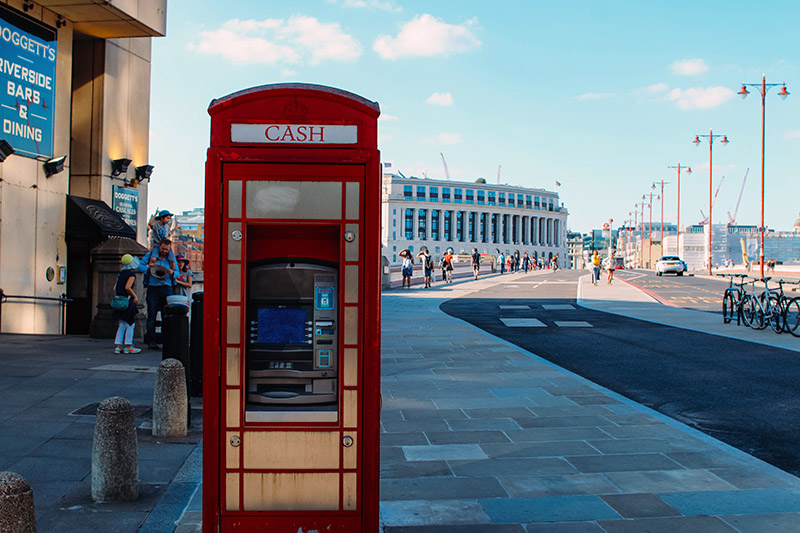Credit and debit cards may appear similar, but their functions differ drastically. One provides a revolving line of credit while the other withdraws funds directly from your bank account – each can incur fees depending on which is chosen.
Understanding the differences between these two types of cards is crucial, as their use can have serious repercussions for long-term finances.
Credit cards are linked to a credit line
Credit and debit cards look similar yet work differently.
Debit cards access money directly from bank accounts while a credit card connects to a line of available funds provided by their card issuer and charges interest should customers not repay within an agreed-upon amount of time. This is what sets these two apart.
The owner of a card can choose either debit or credit options depending on their financial situation and spending habits. A debit card can be used for everyday purchases like groceries and coffee while credit cards provide larger items like vacations or car rentals with rewards and additional consumer protection features than their counterpart.
Purchases made with credit cards involve borrowing the funds from a bank account and being billed at the end of each billing cycle, along with fees and interest. Therefore, it is essential that before using one you ensure you can afford its payments and any applicable fees and interest charges.
One key difference between credit and debit cards is how one of them can help build your credit history, while the other cannot.
Credit card companies track your activity on your card and report it to Experian, Equifax, and TransUnion to calculate your score; on the other hand, debit cards do not contribute anything towards building your score or provide any other additional benefits.
As well as considering the differences between these two types of cards, other factors must also be taken into account when selecting one to use.
For example, if you are an adept spender who always pays their monthly balance off in full each month, credit may be better for you as it will help establish a positive payment history and increase your score while taking advantage of its many features such as rewards programs or extended warranties.
Debit cards are linked to a checking account
Debit cards do not carry the risk of debt accumulation as you can only spend what money is available in your checking account and cannot exceed its limit without enrolling for overdraft protection. If you are wondering hva er debetkort, it is important to find out. Debit cards are linked to bank accounts that allow their holders to make purchases both in-person and online, withdraw money at ATMs, and even make contactless payments at point-of-sale machines.
Finding the right debit card means finding something that meets both your needs and lifestyle, such as offering cash back or rewards while having low fees.
Furthermore, consider whether or not it works with your bank’s ATM network; some banks may only have limited locations while others provide access to a wider network; plus consider any associated fees or offers such as low or no monthly charges on debit cards from certain providers.
Depending upon the card you select, you may need to provide your personal identification number (PIN) when conducting PIN-based transactions. Or you could use signature-based debit transactions instead.
Most debit cards allow users to set a PIN for protection against unauthorized use. Please review all terms and conditions carefully before purchasing any card to identify any possible hidden fees or charges that may exist.
Debit cards offer convenience and security yet can be more costly than other forms of payment. Furthermore, they do not build credit or offer the same level of fraud protection as credit ones do – although they might still be useful for people looking to reduce carrying cash and spending habits.
These are linked to bank accounts, either personal checking or savings accounts. When opening or expanding either account type, a lending institution will typically issue a new card for convenient access to funds.
Before choosing one of either options, carefully research the fees or ATM networks of each institution before selecting your final choice. Alternatively, money market savings accounts (combined savings/checking accounts with lower fee structures and interest rates than regular checking accounts) may be worth looking into as another possible option.
Credit cards are more convenient.
Credit and debit cards resemble one another in that both can be used to make purchases in stores and online, both requiring 16-digit numbers, expiration dates, magnetic strips, and EMV chips – as well as being used to withdraw cash from ATMs or bank branches.
Credit cards typically belong to a card processing network (such as Visa or Mastercard) which enables them to be used anywhere that accepts transactions from that network.
Both types can be easy and efficient ways of conducting financial transactions, especially when compared with paper checks which can be more cumbersome to keep track of and contain sensitive personal data. They allow people to build financial histories and gain rewards.
Debit cards enable users to spend their own money, making them an excellent way to avoid debt and build savings accounts or retirement funds. Furthermore, they can also be linked with savings accounts or retirement funds and used to set up direct debits and standing orders that automatically transfer funds from one’s bank account into bills each month.
Most of the time, they do not incur annual fees but may incur charges for frequent transactions or spending more than your available balance.
Credit accounts provide consumers with access to a credit line they can use to buy items later, with payments due in installments over time. Funds borrowed from the card issuer when making purchases must be repaid plus finance charges; additionally, these companies report information about how their card was used back to financial bureaus.
Timely payments may help increase or maintain a positive score, while missed or overdue payments could lower it significantly.
Debit cards are safer

Many consumers may question whether debit cards are safer than other available options when it comes to building their credit history. Both cards offer different advantages; it is essential that consumers understand how these cards differ.
They offer a convenient payment solution but can also be risky. As they are linked to specific checking accounts, spending can only occur up to what is in your account – though this may help people manage debt more effectively, it can become problematic without proper money management practices in place.
They tend to offer greater security features than their flashier counterparts due to relying on your own funds for payments, which means if they’re lost or stolen, any spending would be limited compared to payment options which provide access to an open line of credit that can be used for any purchase – making people wary about using one due to fear that debt might build up quickly over time.
Finally, these banking cards tend to be easier for individuals to qualify for than other payment options and sometimes offer rewards like cash back or points. Banks and financial institutions offering checking and saving accounts typically issue debit cards; some can even be used at ATMs worldwide to withdraw cash.
Disclaimer: This article contains sponsored marketing content. It is intended for promotional purposes and should not be considered as an endorsement or recommendation by our website. Readers are encouraged to conduct their own research and exercise their own judgment before making any decisions based on the information provided in this article.



































































